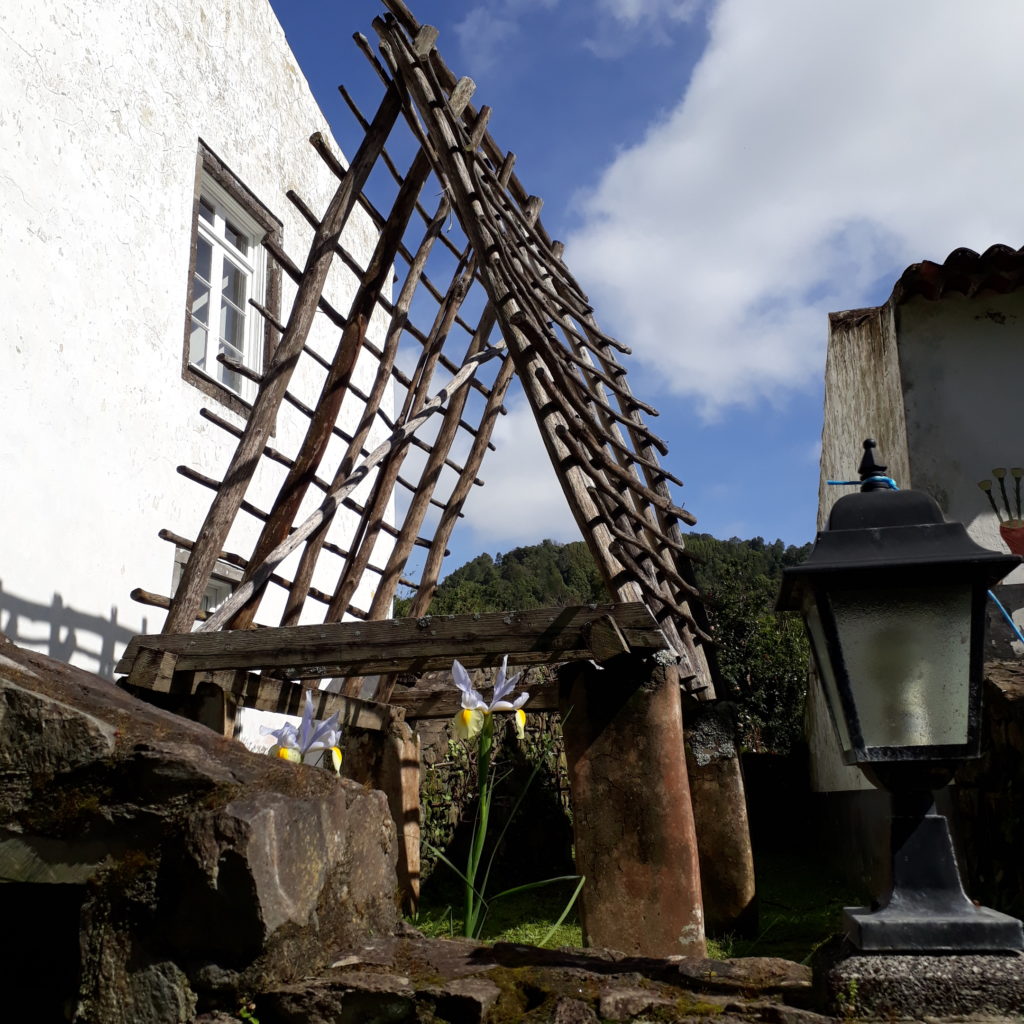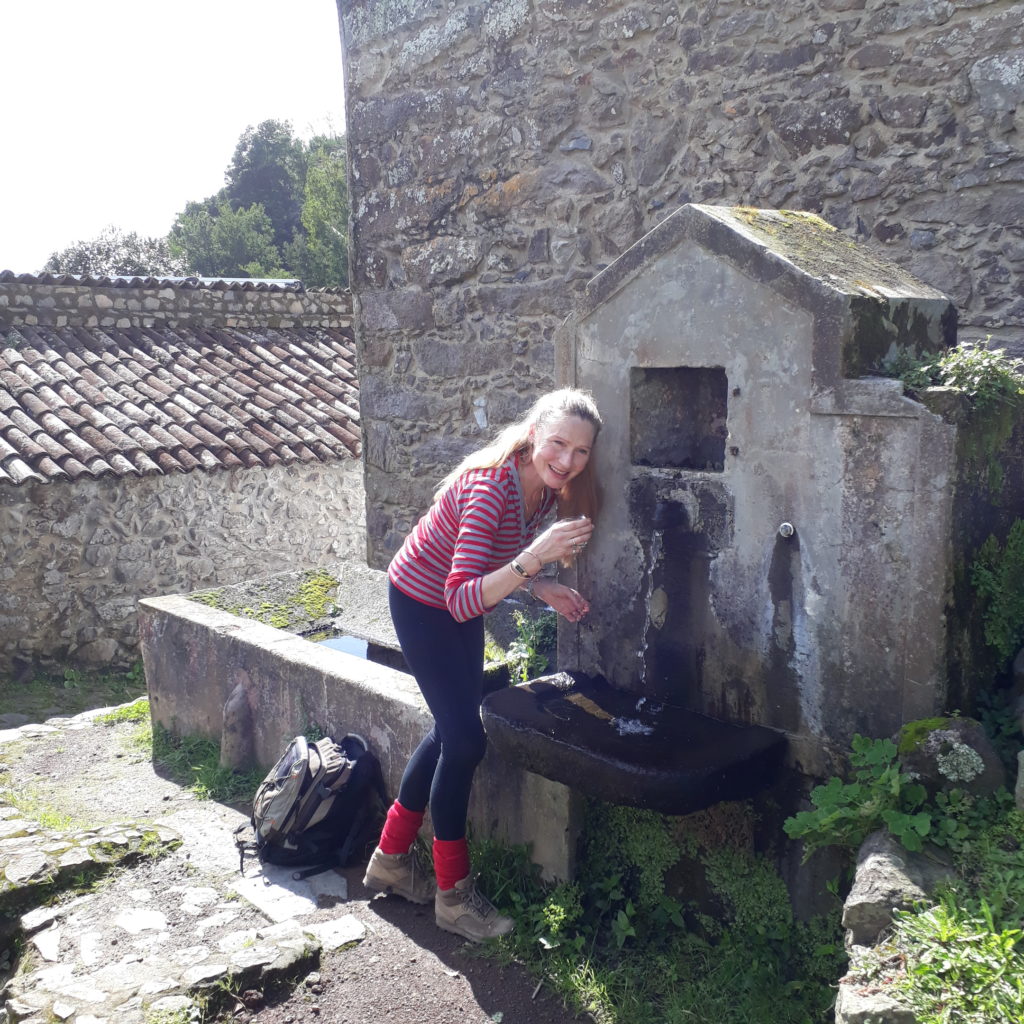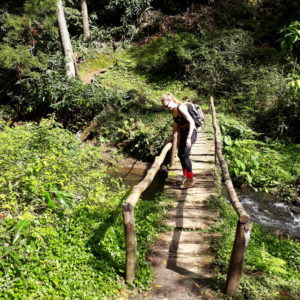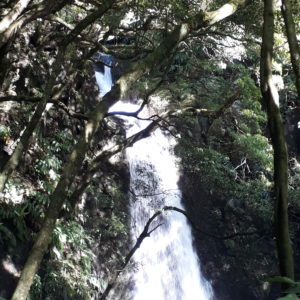So, where do you send a horse-riding, animal-loving rambler, a self-confessed history nerd with a penchant for trivia, and who also lists Charleston dancing and the martial art Ki Aikido as her interests?
The Azores of course!
These are the first impressions of our comms Queen Anna Waddington-Feather’s recent trip to the Azores:
The first thing which struck me when driving out of Ponta Delgada was just how green the island of São Miguel is; and the second?
How high the fields’ dividing walls and hedges are!
 My guide Pedro explains the high walls and hedgerow were originally built to protect the orange trees. “Oranges were the golden fruit,” he says, and he points out another feature on the landscape part of the island’s orange history – the towers dotted around the hilltops.
My guide Pedro explains the high walls and hedgerow were originally built to protect the orange trees. “Oranges were the golden fruit,” he says, and he points out another feature on the landscape part of the island’s orange history – the towers dotted around the hilltops.
“The towers were important for orange sellers to see the ships arriving from Britain. The lookouts would see the ships coming and then someone would race down to meet them; the reason being is the first sellers to greet the ship would get the best prices for the oranges.”
Speed was the essence at every stage of the process. If the ships weren’t loaded quickly, there was a possibility of them sailing back to England half full if bad weather came in and forced the ships to leave early. Then there would be a race between the ships to get the oranges back to England; once again, the first ship back to Britain would get the higher price. “This race is part of the history behind our annual regatta,” says Pedro.
Many landowners grew rich from the golden fruit, resulting in the stunning manor houses dotted around the countryside. However, in the 1880s the fungal disease, gummosis struck and wiped out this lucrative trade.

“So we had to find another crop,” says Pedro; hence, the introduction of tea, bananas and pineapple. “The Azorean bananas are much smaller and sweeter than other bananas,” says Pedro. “We used to have a banana tree in the student house I rented – how many students get free bananas?!”
Pedro reckons with the warm climate and the fertile volcanic soil, you can stick just about anything in the ground and it will grow, and these aren’t the only immigrant plants. Calla lilies, agapanthus and bird-of-paradise plants, whose origins are from Southern Africa, line the road towards Povoação and I spot a few tree ferns, endemic to New Zealand on the drive too.
From Australia, there is banksia and eucalyptus in the woodlands, and the tall field hedgerows are pittosporum, another Australian indigenous plant. There are also colourful hydrangeas originating from Japan. Unfortunately, there is also an unwelcome plant immigrant, the Himalayan yellow ginger lily; although its yellow flower is attractive, is an invasive plant and is destroying much of the ground fauna.
Walking up to the abandoned village of Sanguinho we come across bananas, yams, lemons, pineapple, guava and, of course, oranges.
Some of the houses have been beautifully restored, and there are remnants of its farming past such as the platforms used to dry corn cobs.

There is also a handy water fountain in the centre!

In other parts of the village nature is gently taking over some crumbling ruins, but you can still see a traditional Portuguese oven-chimney with the ‘praying hands’ roof tiles.

Remnants of terraced-gardens eventually give way to dense woodland and the cool green canopy is a pleasant change from the bright sunlight.
Mosses and ferns, delightful wooden bridges crossing the babbling creek and roaring waterfalls all add to the enchantment.


Pedro says the Azores are ‘The jewel in Portugal’s crown’ and as this is coming from an original mainland Portuguese, I’m inclined to agree with him.
See this jewel for yourself! Get in touch with our Azores specialists Max or Jake by phone – 01768 721020 or via our contact form – archipelagochoice.com/contact/
On the same trip, Anna also went horse riding and discovered some volcanic experiences too.
(And you can see more pictures of what Anna got up to in the photo album our Facebook page)

